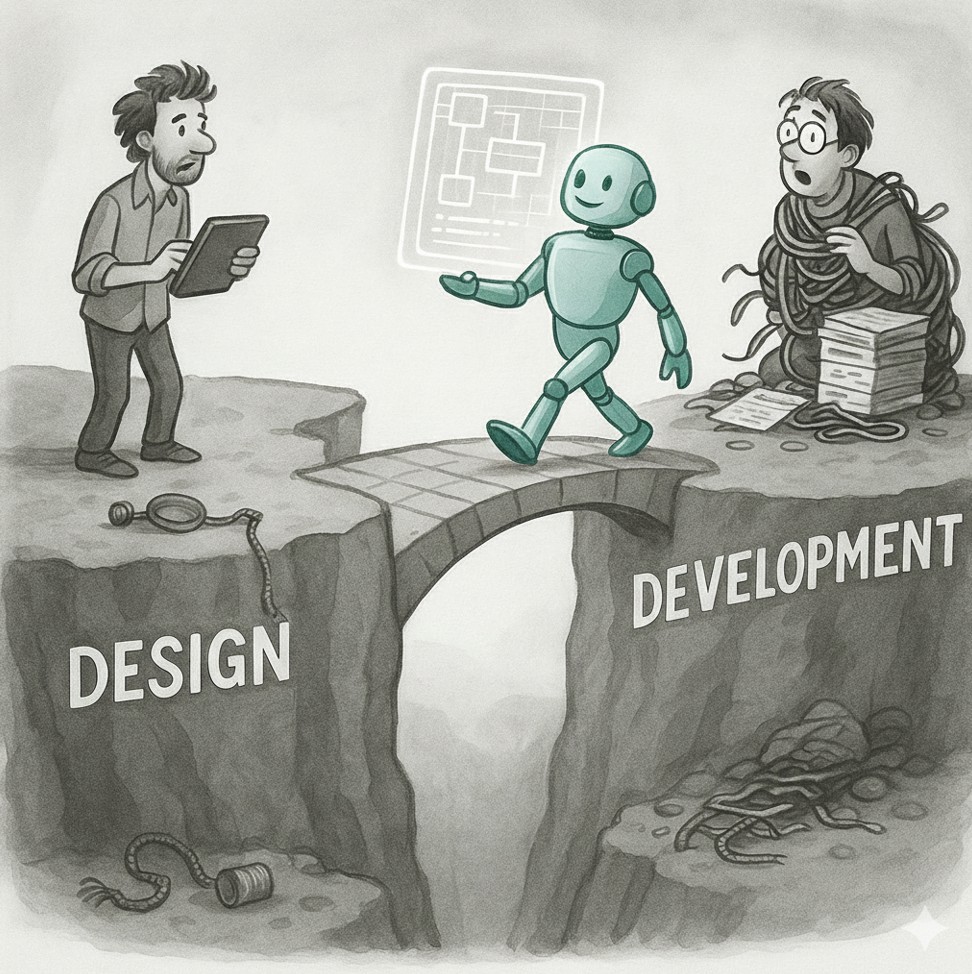Anthropic and Figma Launch AI-Powered Workflow to Turn Designs Directly into Production Code
A new collaboration between Anthropic and Figma leverages AI to turn designs directly into production-ready code, aiming to eliminate the inefficient handoff processes.
A groundbreaking collaboration between Anthropic and Figma introduces a new workflow designed to resolve the long-standing friction between designers and developers by converting Figma designs directly into production-ready code. For years, the "handoff" has been a significant bottleneck in software development, characterized by miscommunication and inefficiency. This deep integration aims to solve that problem by connecting Anthropic's advanced Claude Code agent to Figma's design environment through the Model Context Protocol (MCP), automating the entire handoff procedure. Historically, the process has been riddled with systemic problems, from disorganized design files to inconsistent styling, leading to a frustrating and prolonged communication cycle. While tools like design systems have offered some relief, they have not addressed the fundamental challenge: the manual, error-prone process of translating a static design into functional code.
This new workflow is founded on a trio of core technologies: Figma's REST API, which grants access to the design file's structure; Anthropic's Claude Code, an AI model engineered for "agentic coding"; and the Model Context Protocol (MCP), which facilitates a detailed dialogue between the AI and Figma. A specialized MCP server provides deep, semantic context, explaining the intent behind design elements, which is crucial for generating accurate code. The process is straightforward: a user directs Claude Code to a Figma file. The AI then absorbs the complete design context, conducts a thorough audit, and generates the necessary code, which is delivered as a pull request in the team's Git repository.
A critical step is an automated, multi-point inspection of the design file that occurs before any code is generated. The AI serves as a guardian for the design system, checking every element against the central library of design tokens and flagging any deviations. It also conducts a comprehensive audit based on the Web Content Accessibility Guidelines (WCAG), identifying key issues like poor color contrast and illogical focus order. Furthermore, by interpreting Figma's Auto Layout rules, the AI can understand how the design should adapt to various screen sizes and check for common responsiveness problems. This automated review transforms the abstract idea of "design quality" into a quantifiable metric, allowing senior team members to concentrate on more strategic initiatives.
The assertion that the output is "production-ready" warrants a closer look, as this standard requires code to be readable, scalable, secure, and well-tested. Although the AI can produce clean and consistent code, there are inherent risks. AI models are known to "hallucinate" incorrect code, introduce security flaws, and create long-term technical debt. For these reasons, human supervision is essential, and the industry consensus is that all AI-generated code must be carefully reviewed by an experienced developer. The dialogue between designers and developers will not be eliminated but will instead shift from implementation details to higher-level strategic and architectural discussions.
Ultimately, this collaboration marks a significant evolution in software development, moving towards a model of human-AI partnership. It paves the way for smaller, more agile "agentic pods," where a handful of senior experts guide AI agents that manage the bulk of the implementation work. In this new structure, the roles of designers and developers are redefined. Agentic Designers will concentrate on building the intelligent design systems that direct the AI, while Agentic Engineers will transition from writing UI code to tackling complex backend logic and auditing the AI's output. This technology does not make skilled professionals obsolete; rather, it enhances their capabilities by automating routine tasks. The future of web development will feature professionals who are empowered to create more sophisticated applications at an unprecedented pace. The key competitive advantage will not be access to AI itself, but the quality of the proprietary context an organization can feed its AI agents.
